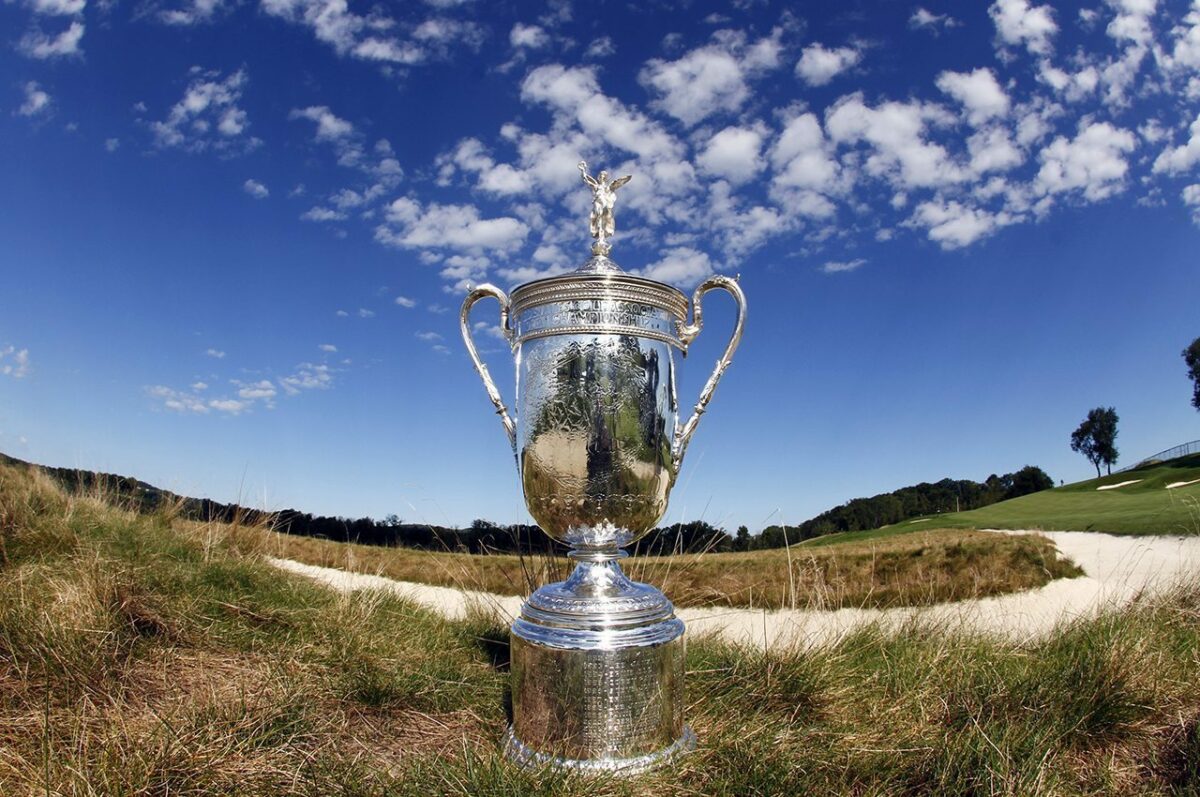[connatix div_id=”3f8b015acdd24c648befc5d5dac47469″ player_id=”b5b22055-8c69-4186-8375-d8426b37ec56″ cid=”7cbcea0d-4ce2-4c75-9a8d-fbe02a192c24″]
LOS ANGELES – The members at Los Angeles Country Club weren’t the only ones expressing great concern that competitors in the 156-man field of the 123rd U.S. Open picked apart the famed George C. Thomas Jr., layout to the tune of a record three scores of 63 or better, the first pair of 62s in championship history and the lowest cumulative scoring average in U.S. Open history (71.76).
So, too, were the members at Oakmont Country Club in Pittsburgh, Pennsylvania. The club, which ranks sixth in Golfweek’s 2023 Best Classic Courses list, is scheduled to host a record 10th U.S. Open in 2025. But in advance of staging its latest major, architect Gil Hanse, the same designer who returned LACC to its former glory, will be doing a historic renovation at Oakmont, which commenced in April on the front nine, and it has some members alarmed that one of golf’s architectural originals doesn’t lose its steel.
Founder H.C. Fownes built Oakmont to be as hard as the iron that came out of its nearby foundry. His son, W.C., believed that a shot poorly played should be irrevocably lost, and his crime and punishment philosophy led to hundreds of bunkers on the property.

Oakmont’s fairways are most famously squeezed by the Church Pew bunkers that guard Nos. 3 and 4 as well as drainage ditches that dot the property at holes such as Nos. 9, 11, 12 and 18. The key to having a chance at a course defined and defended by its greens is to find the fairways.
The fairways at LACC featured some of the widest in U.S. Open history. Champion Wyndham Clark hit a big cut at 18 that still managed to find the short grass at a 56-yard wide fairway that was as welcoming as the runway at LAX. It was a far cry from the typical U.S. Open where competitors have been known to have to walk single file because the fairways are so narrow.
File it under rumblings and grumblings but with several national championships on the horizon, including the U.S. Open in two years, Oakmont members were texting their concern that Hanse’s alterations – which include expanding greens to their original size and deterring long bombers from playing down adjacent holes – might make Oakmont similarly susceptible to lower scoring.
Speaking about how LACC held up against the best golfers in the world in its U.S. Open debut and what could be done to toughen it up for its return engagement in 2039, Southern California native Collin Morikawa said, “Maybe the easy holes are a little too easy out here, and that’s weird to say, but maybe fairways need to be brought in a little bit.”
With the backing of longtime Oakmont pro (now retired) Bob Ford, Hanse was called in to do a restoration plan to widen fairways and shallow fairway bunkers. Hanse and LACC have members scared that venerable Oakmont could be made vulnerable. Members didn’t like seeing fairways more than 35-yards wide given the length players can bash it these days and how the pros attacked LACC, especially on Thursday, where soft conditions and barely a breath of wind led to a birdie barrage.
Last year, Oakmont was selected as an anchor site for future USGA championships including four U.S. Opens between 2025 and 2049, two U.S. Women’s Opens, a U.S. Amateur and a Walker Cup.
Oakmont members pride themselves on having to slow the greens down for hosting a major and love to boast that it could be ready to host the U.S. Open on two weeks’ notice – the time it takes to grow the rough.
Oakmont went through a radical change during the early 2000s when it underwent a secret tree removal program that peeled away trees and restored strategic options. Hanse’s master plan is considered the next step in maintaining the founder’s vision for Oakmont.
The 2025 U.S. Open at Oakmont would likely be the last national championship contested before a potential rollback of the golf ball – still to be approved – would be instituted. One school of thought would say this is just armchair architects making something out of nothing. Oakmont likely will remain a beast, and Hanse’s batting average at restoring the classics is strong to very strong. Here’s hoping the architectural inland links built on 190 acres of rugged farmland will remain as tough as nails for the pros in two years’ time.
[lawrence-related id=778365213,778366405,778364866]


